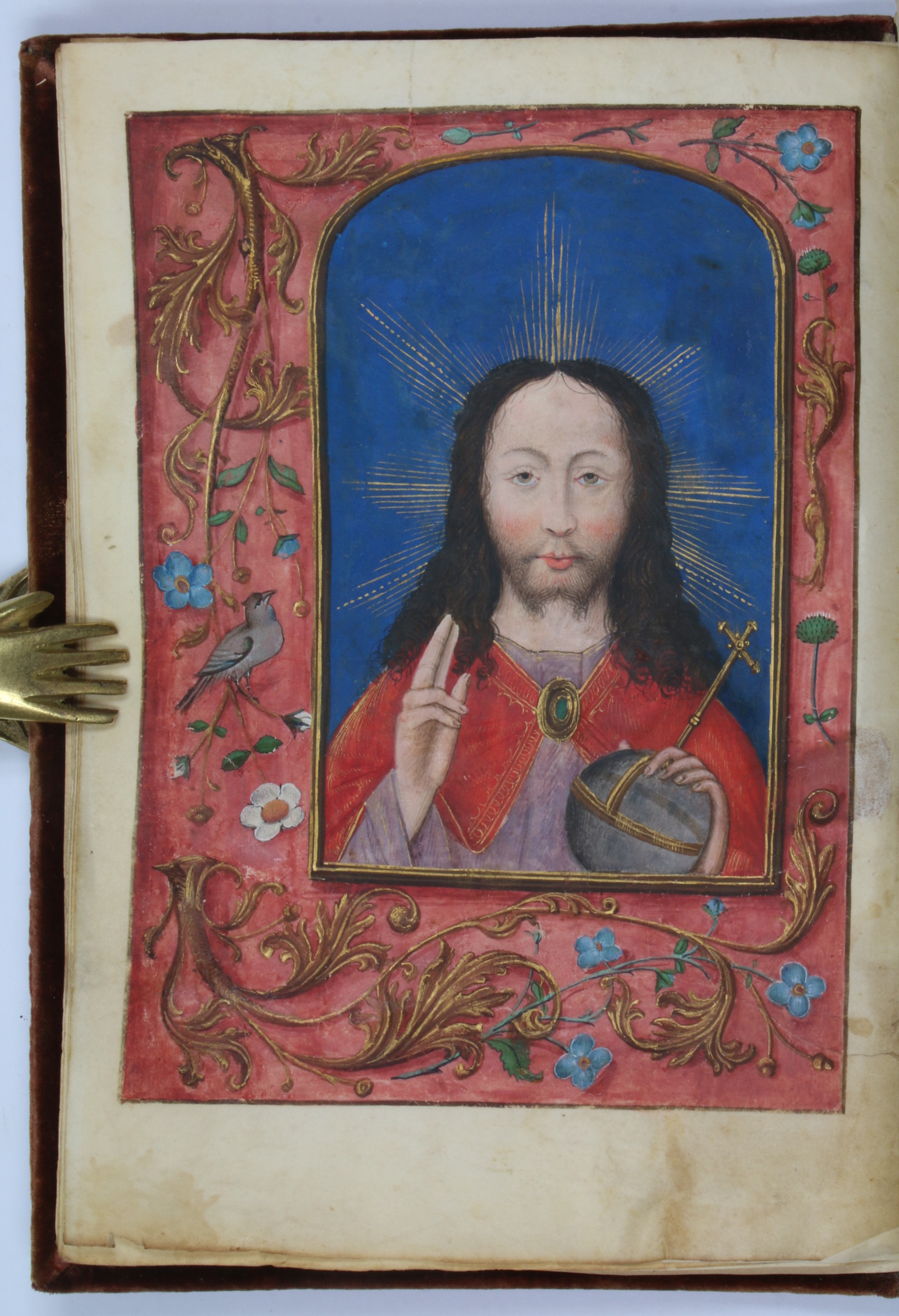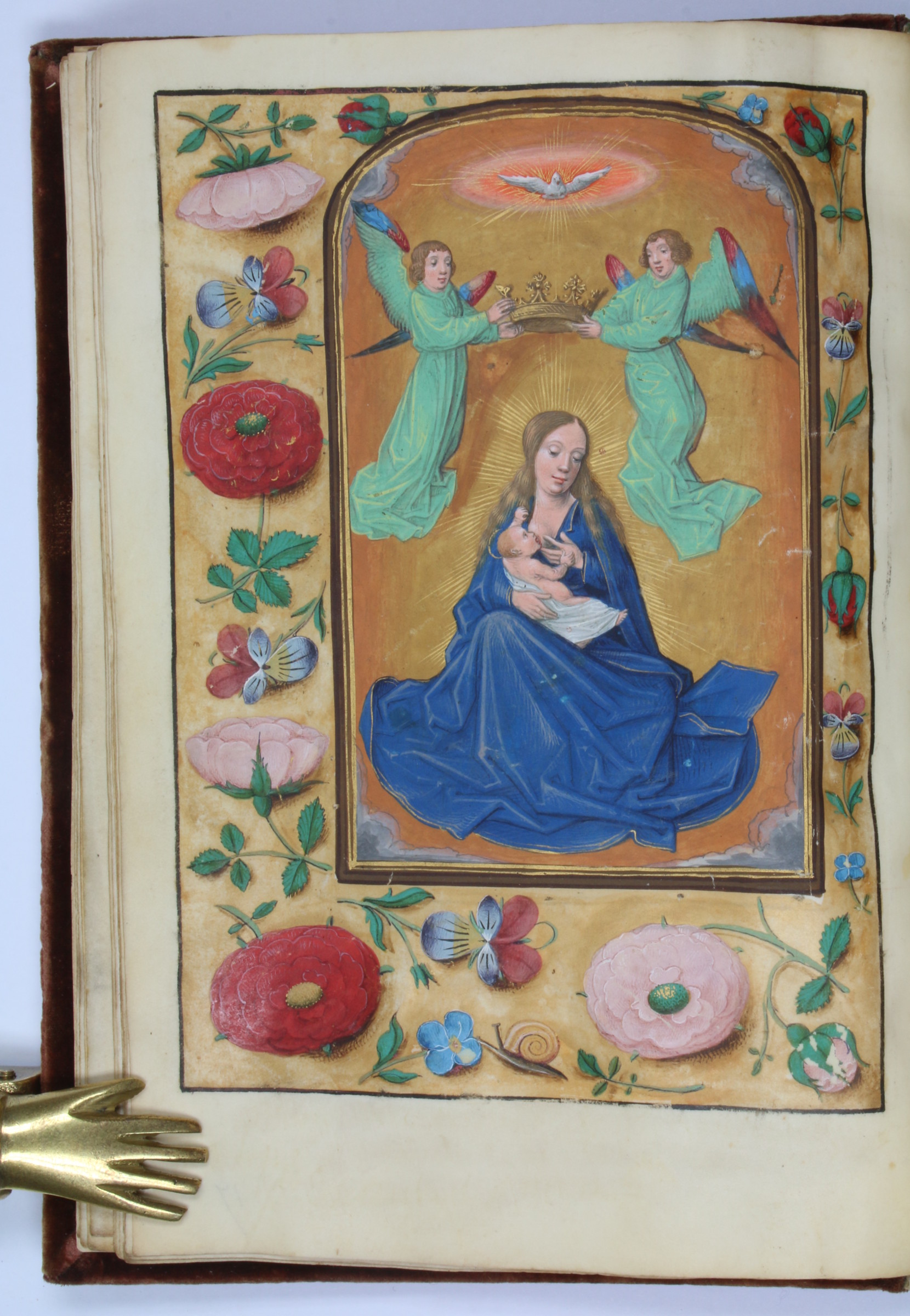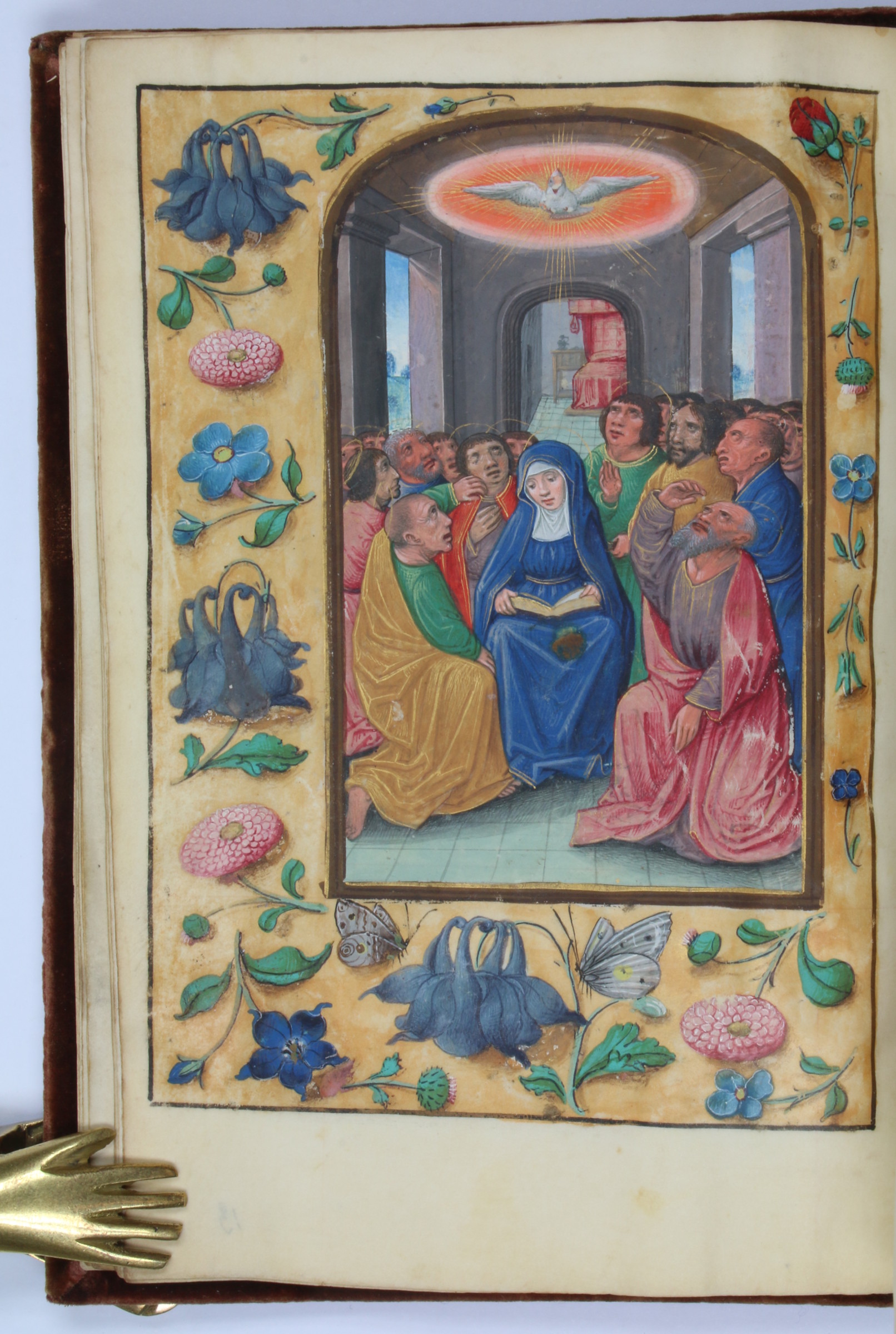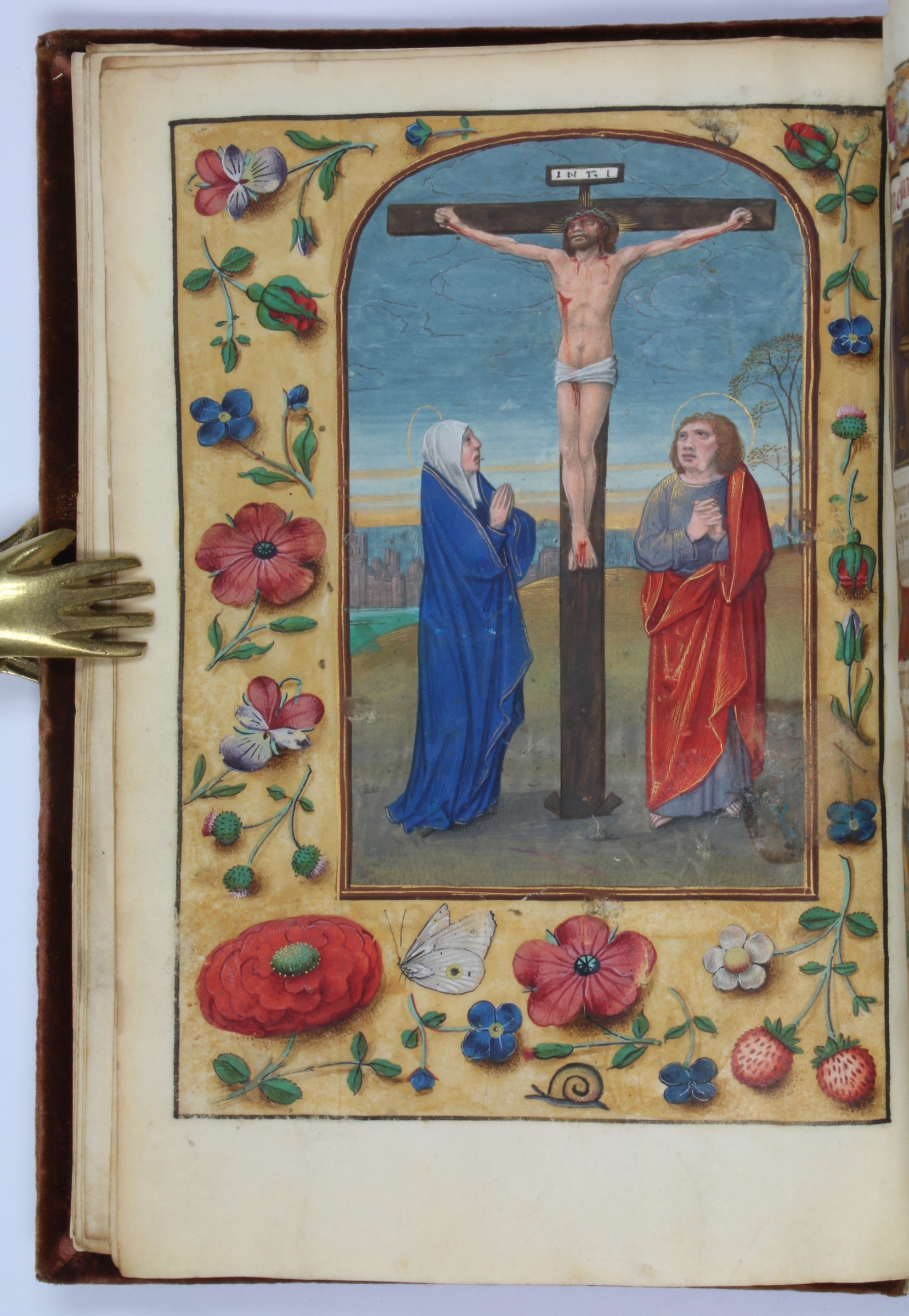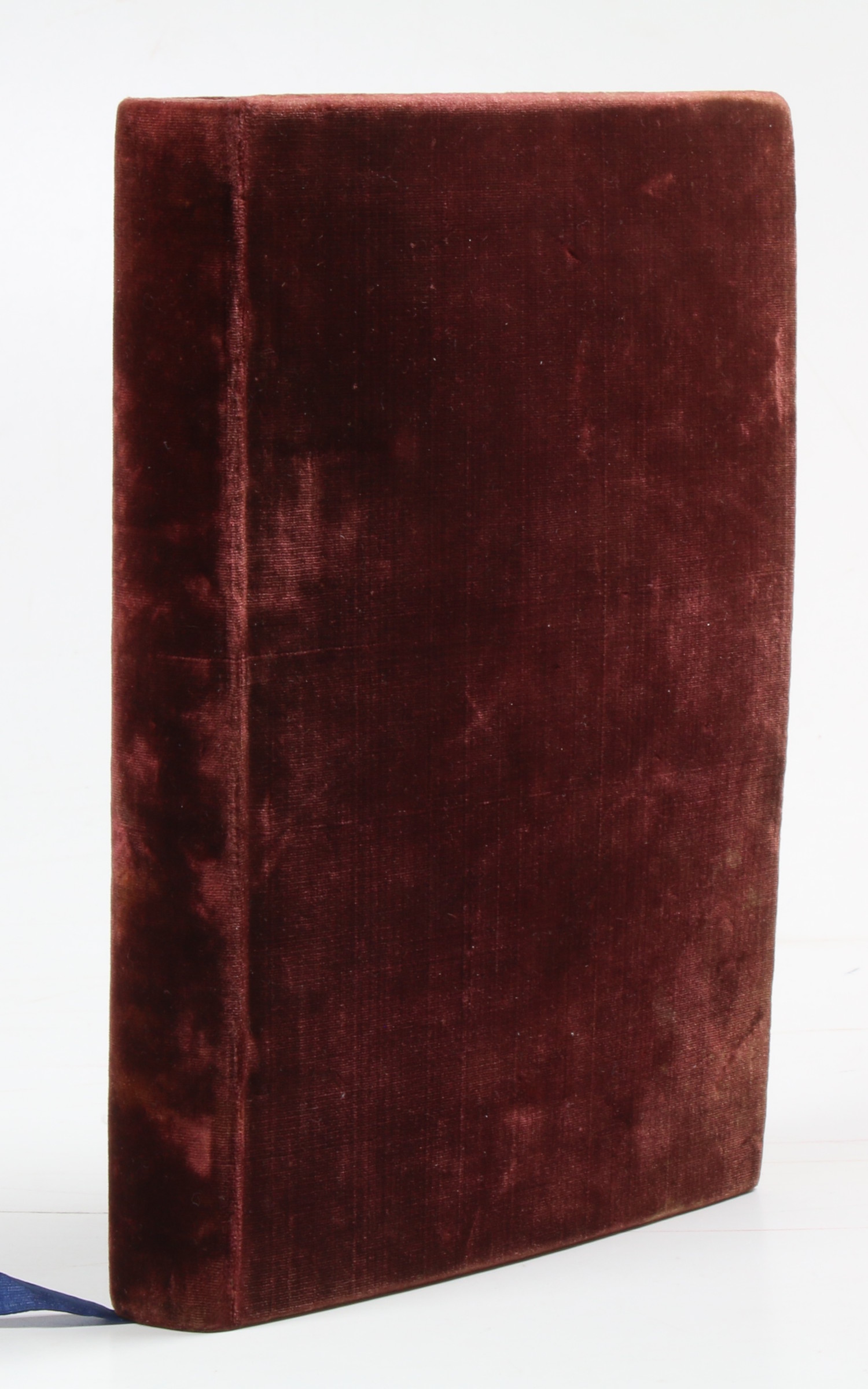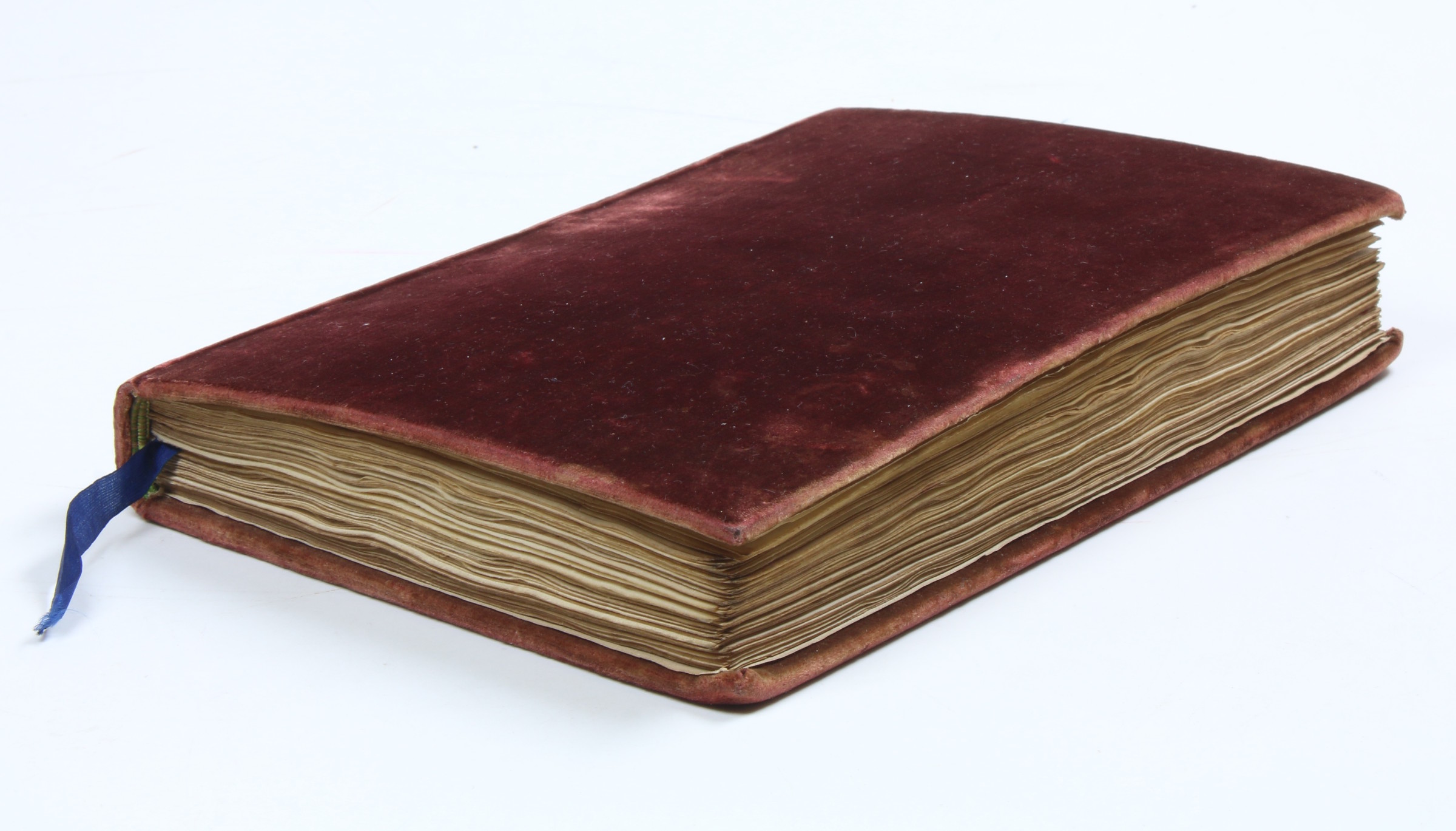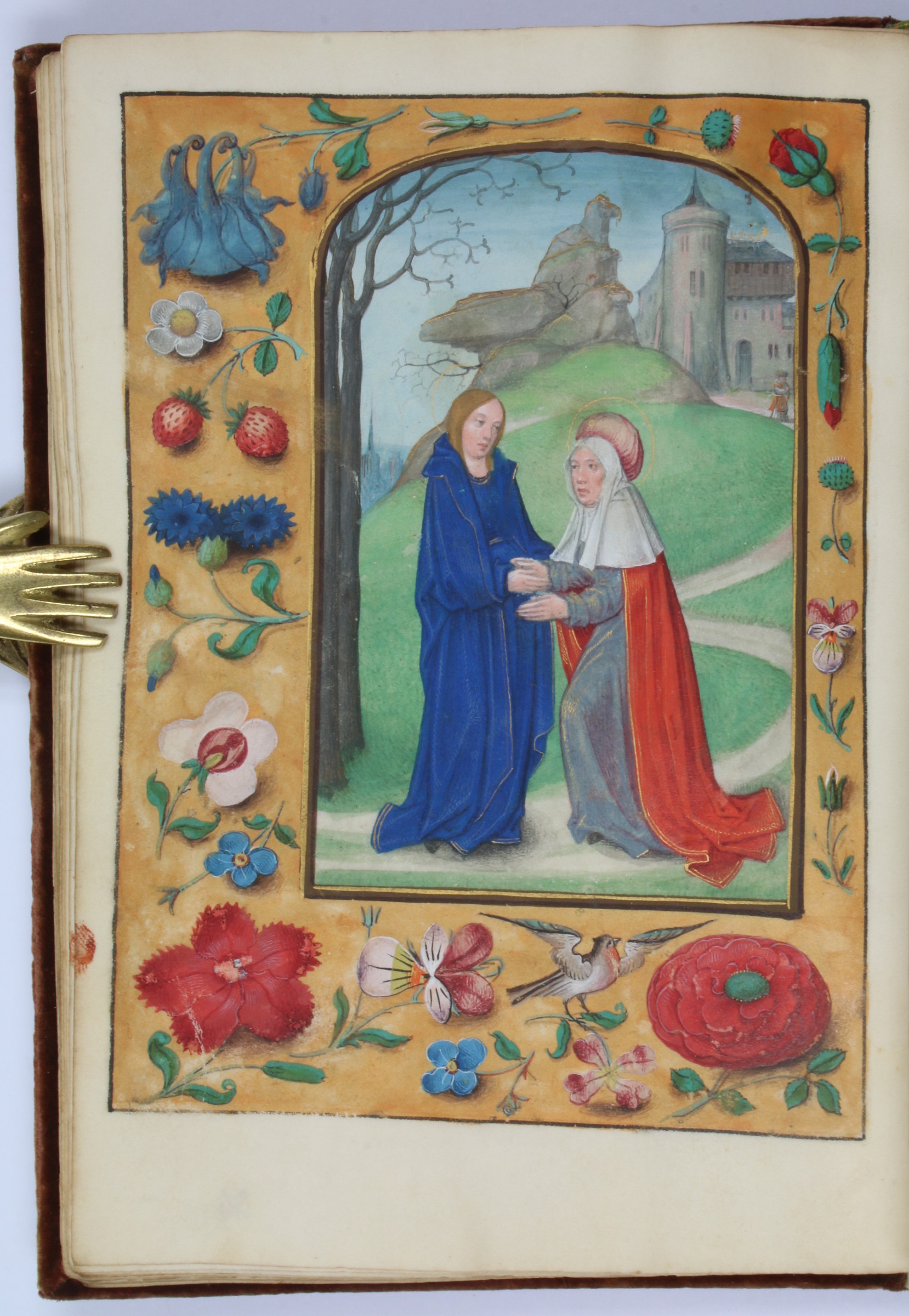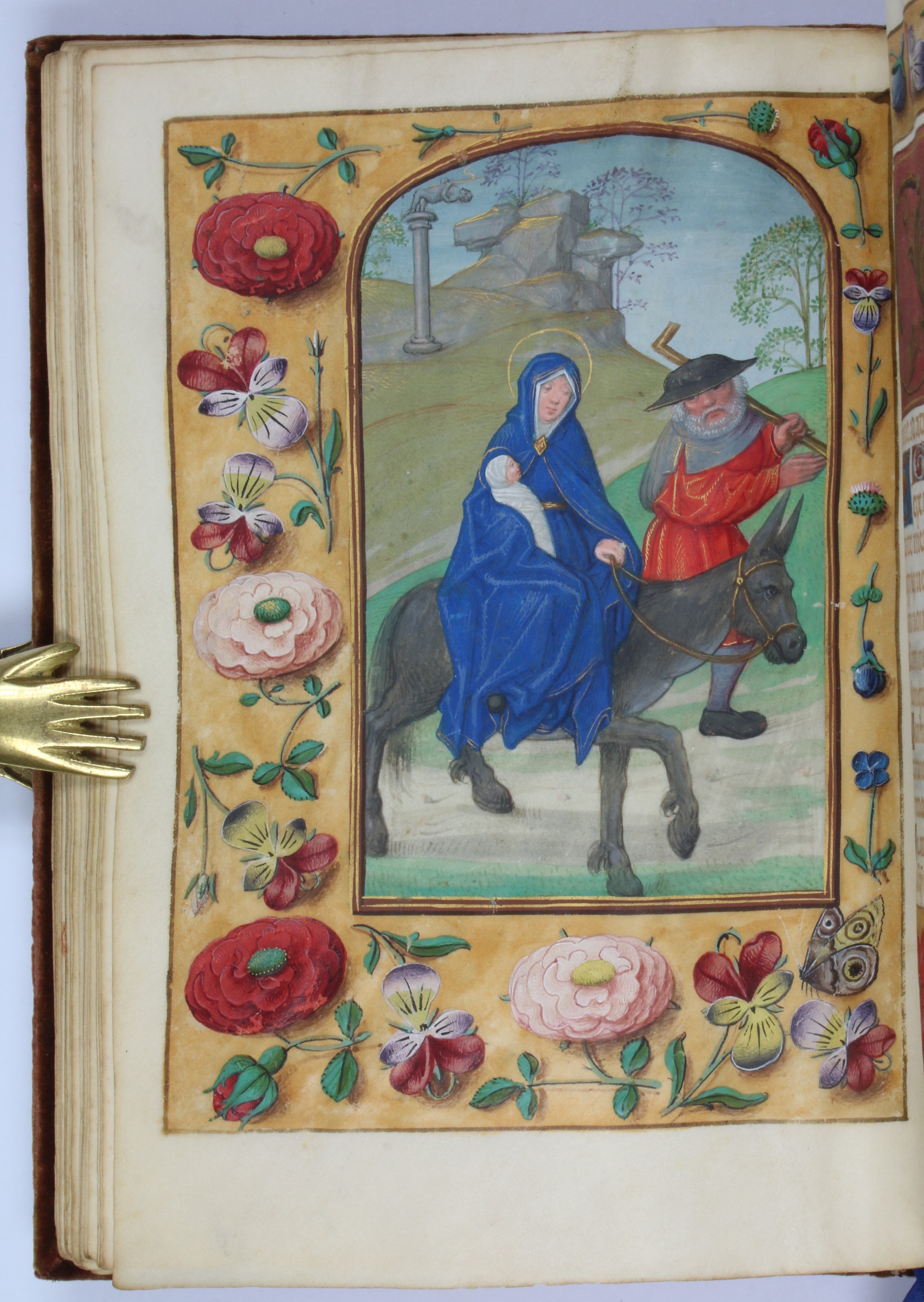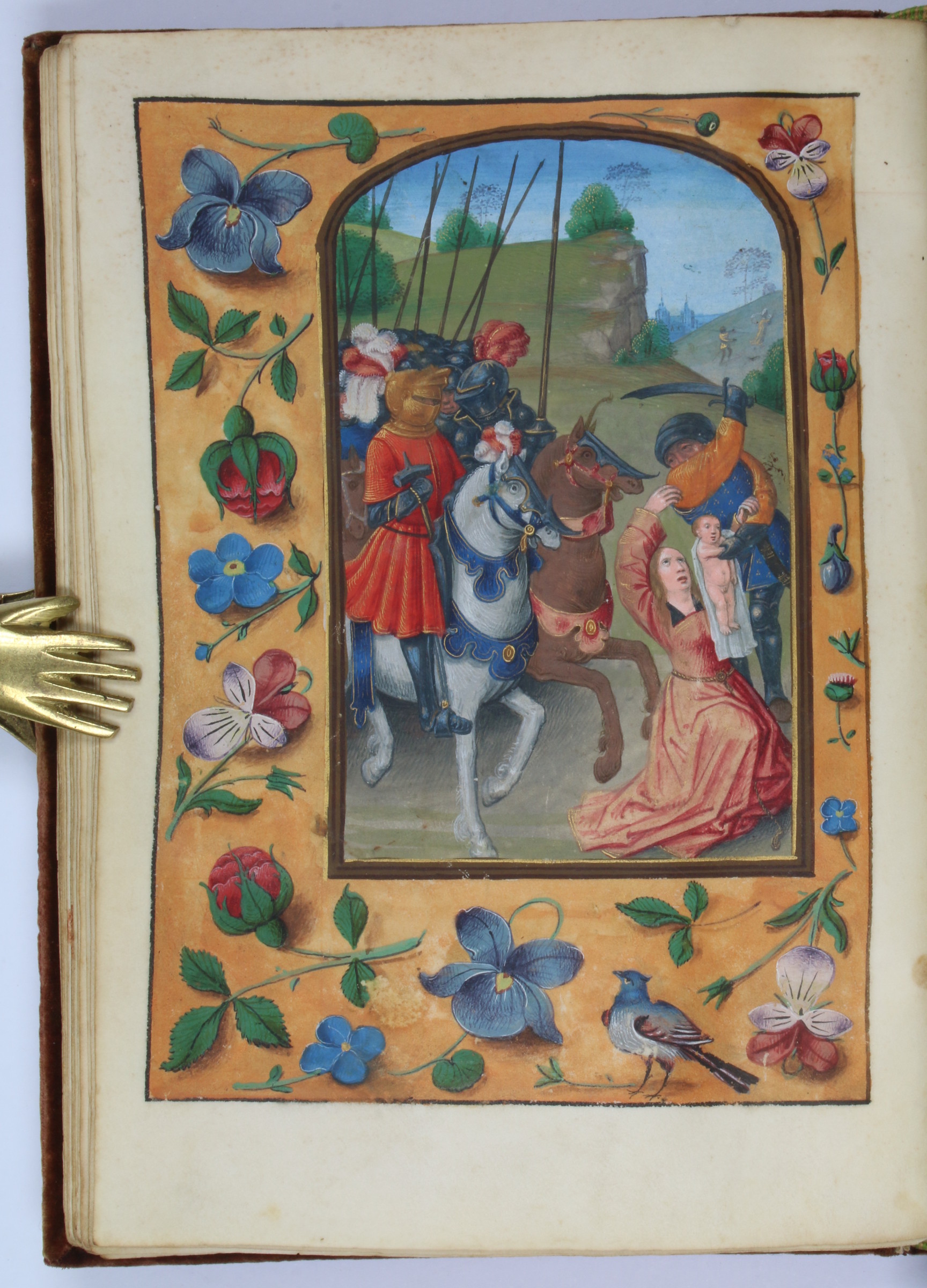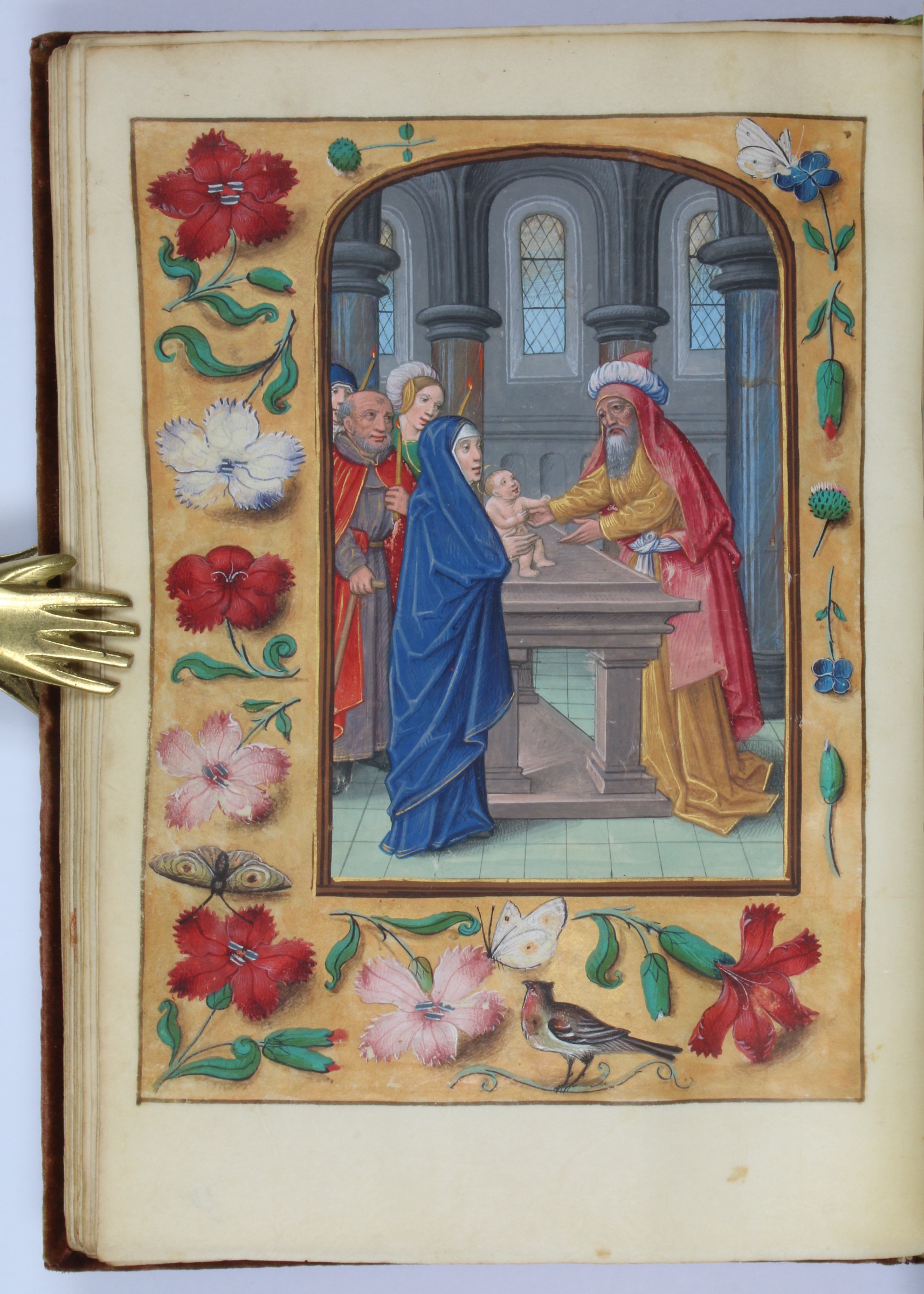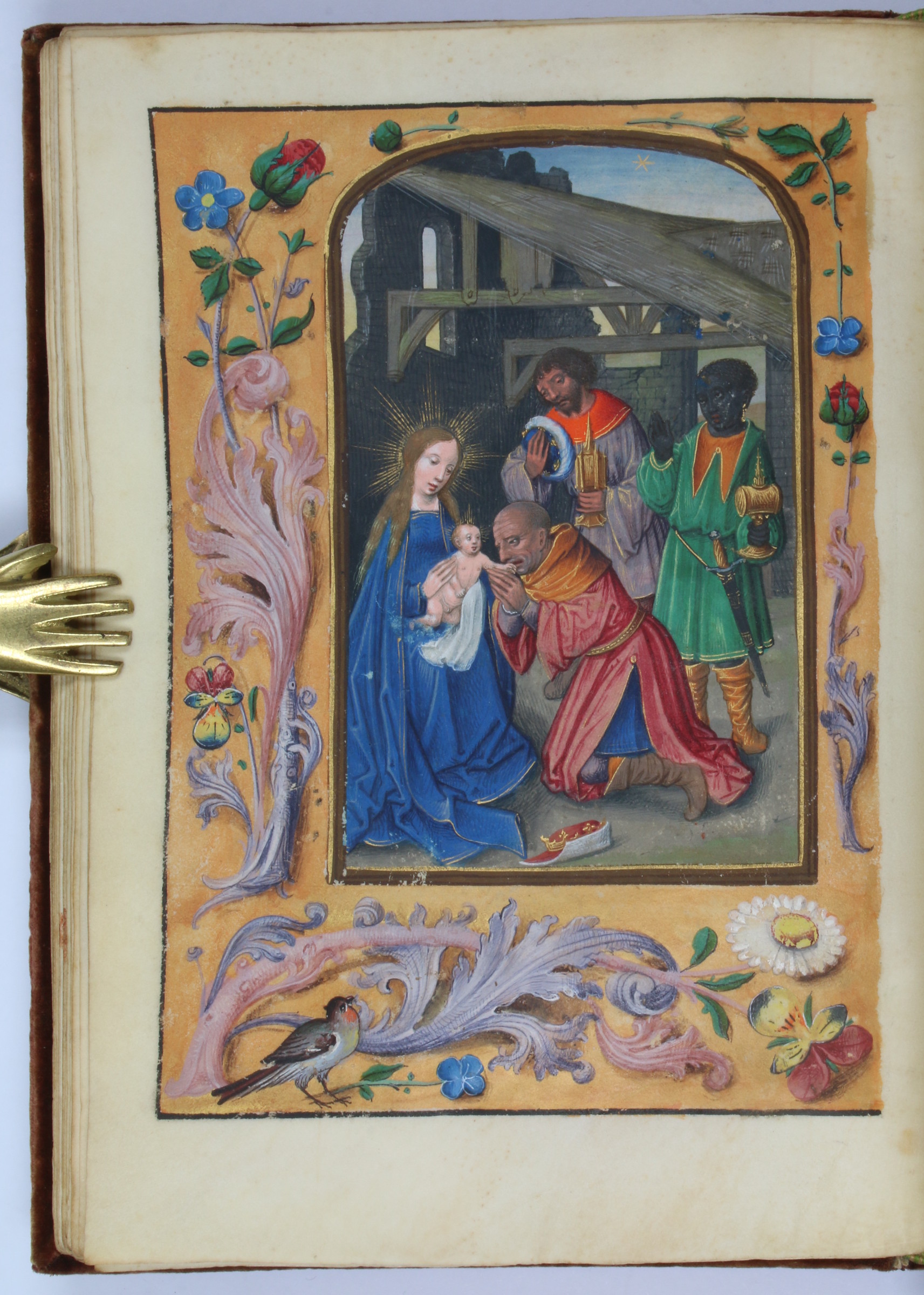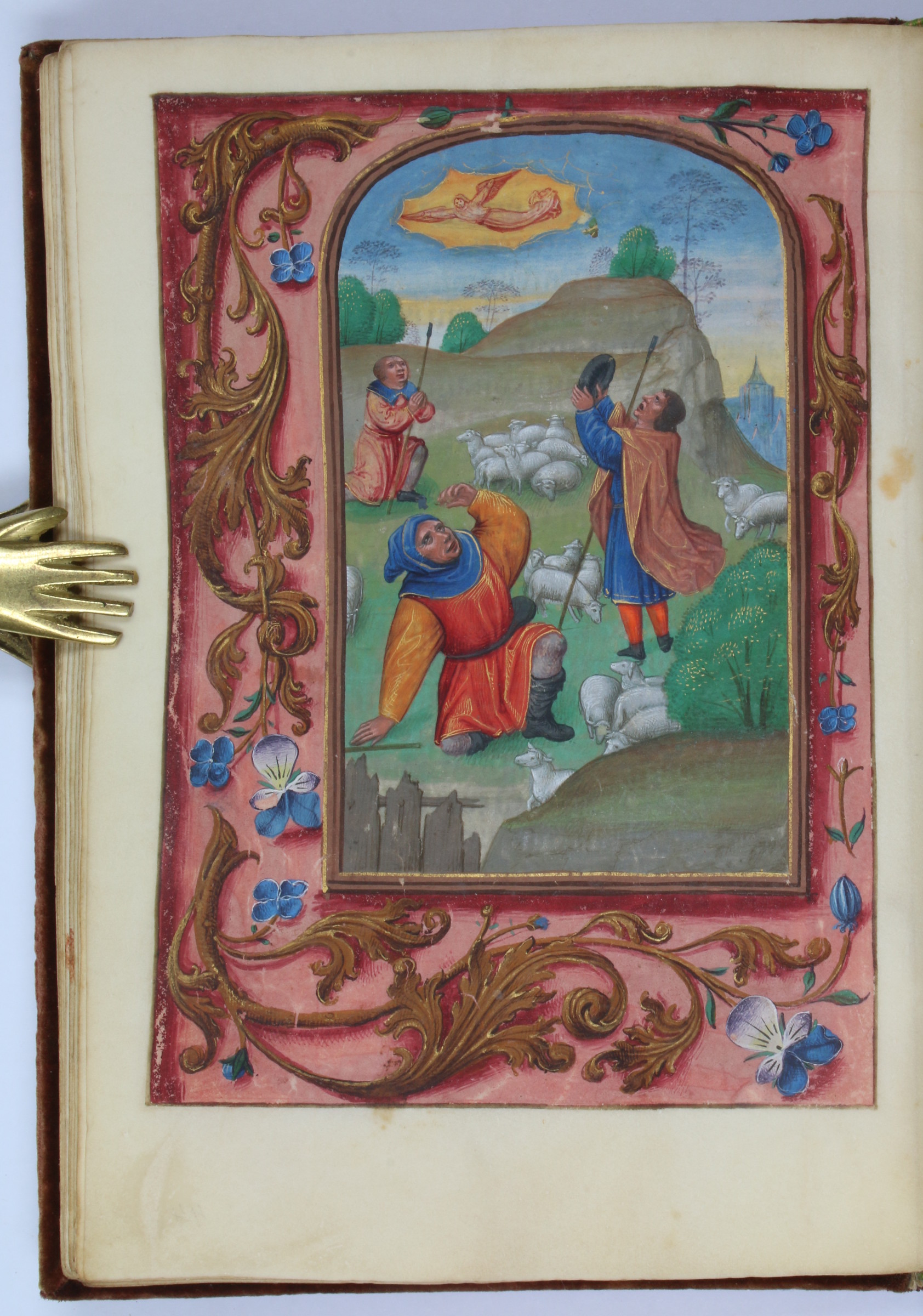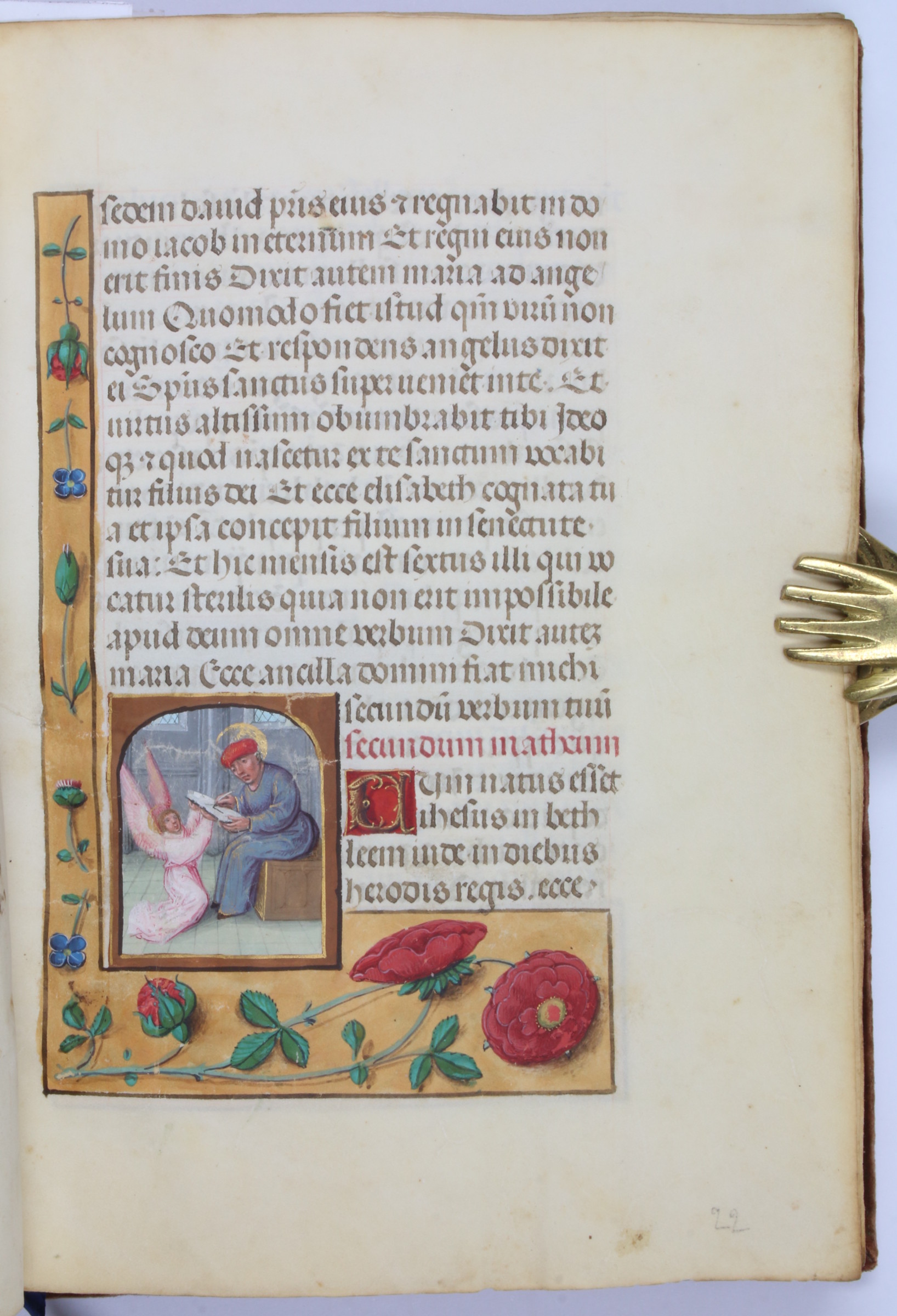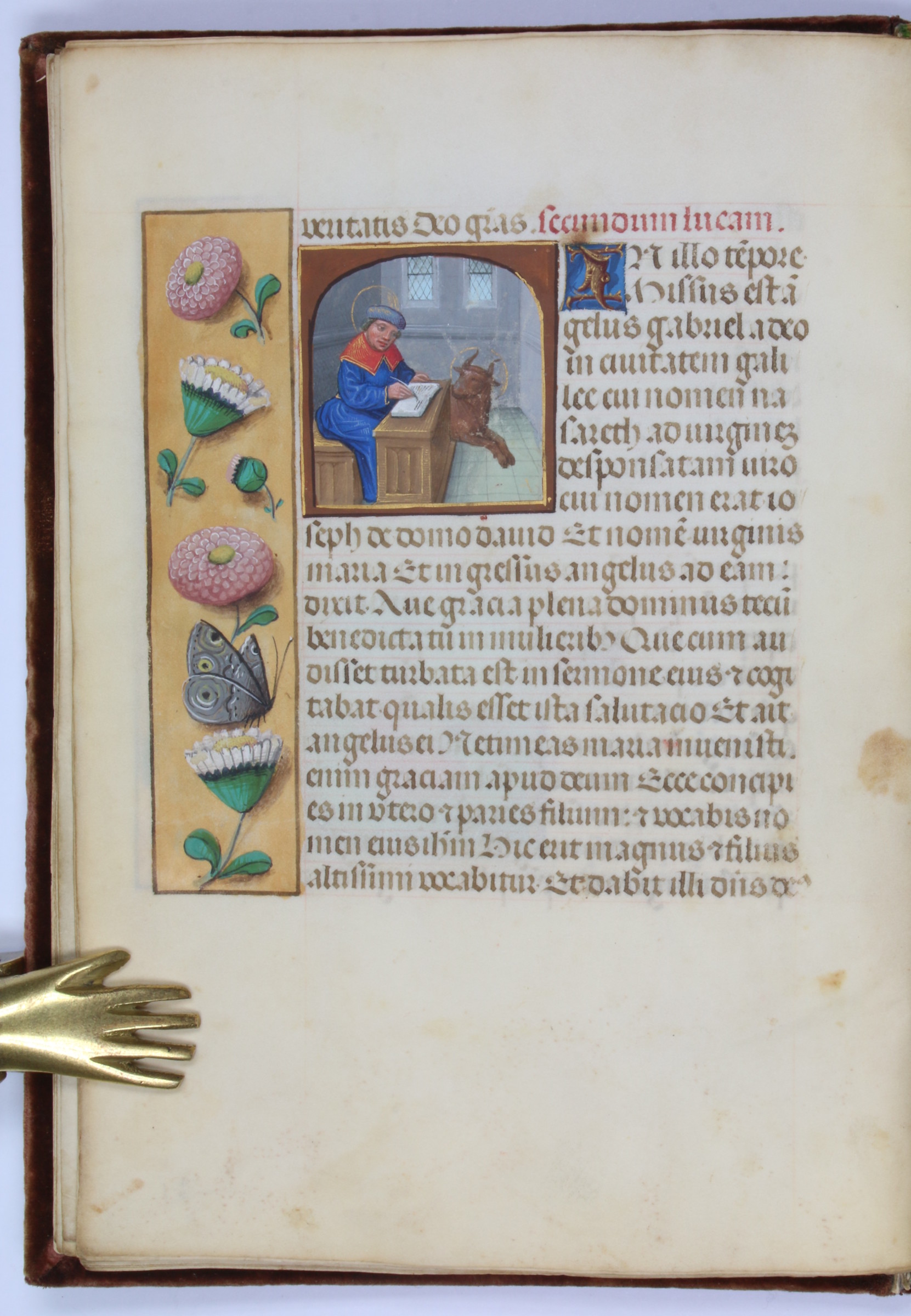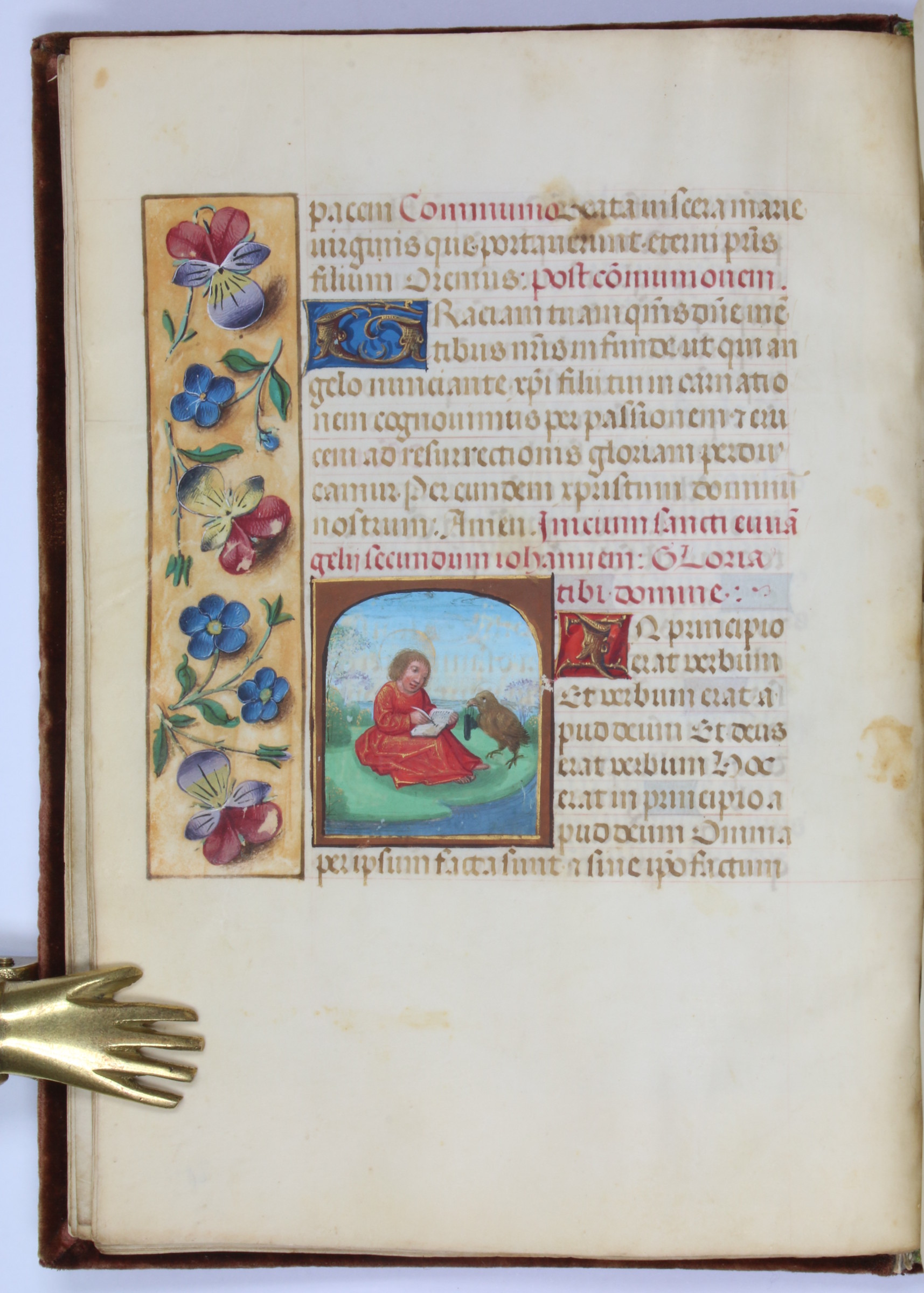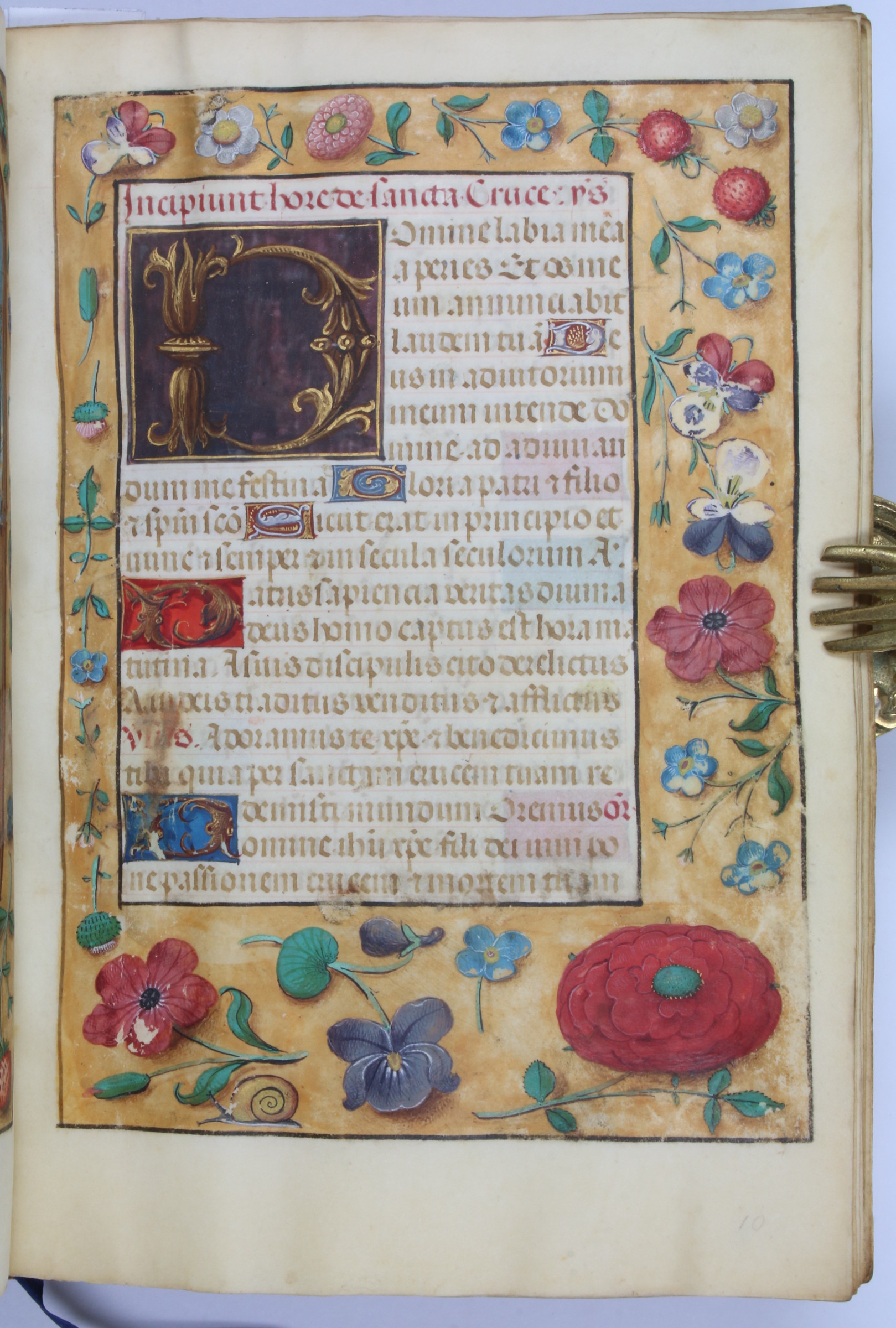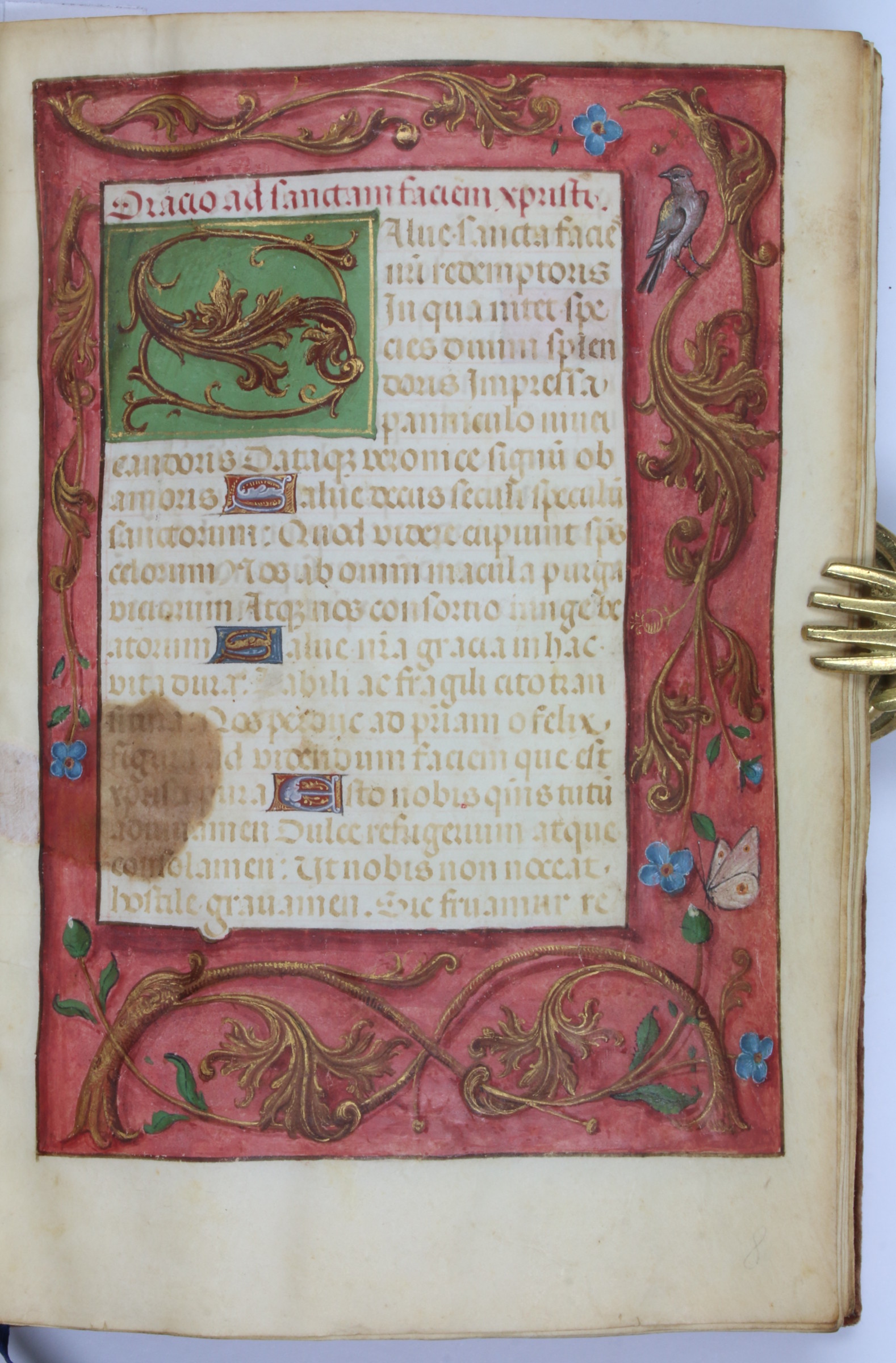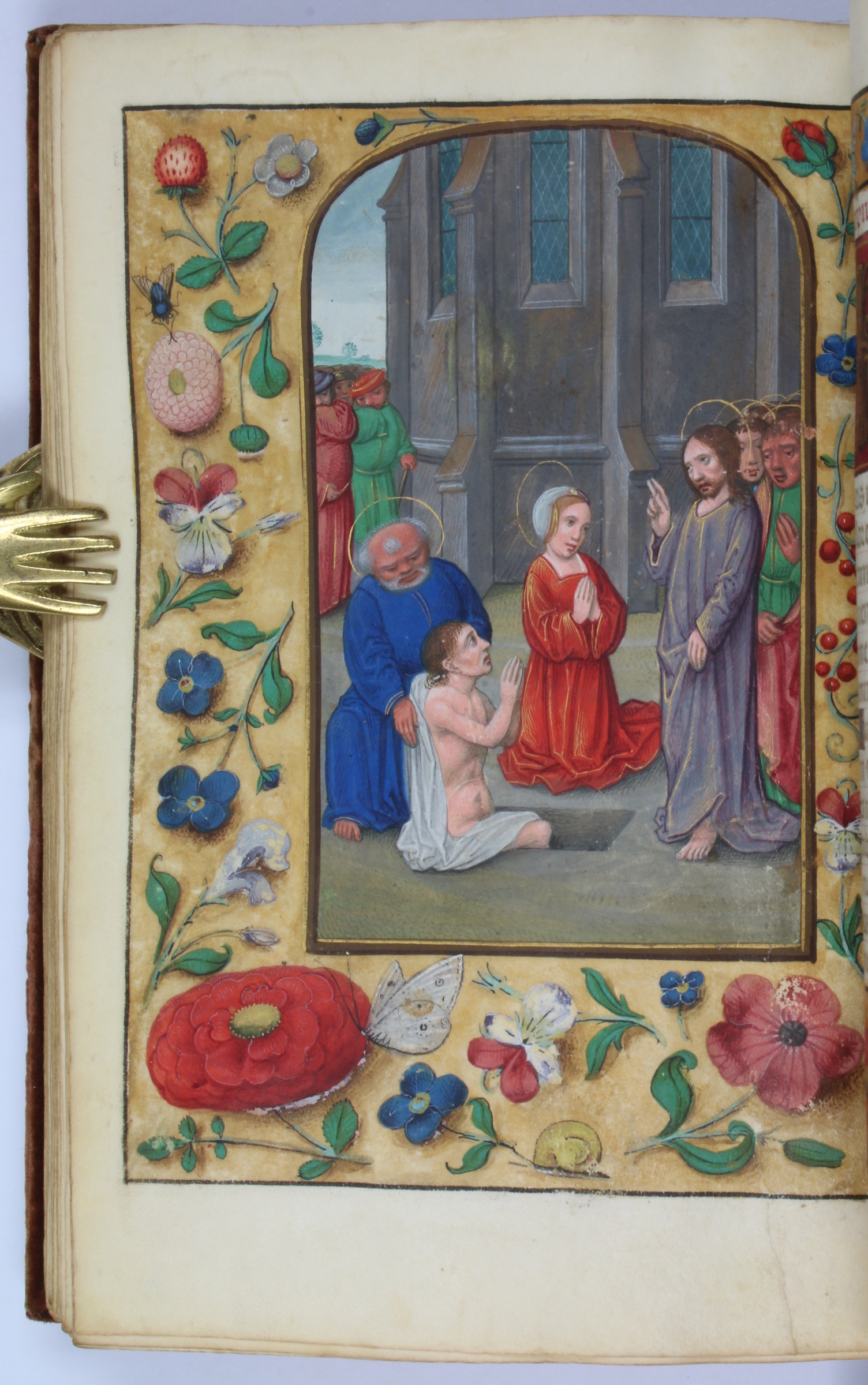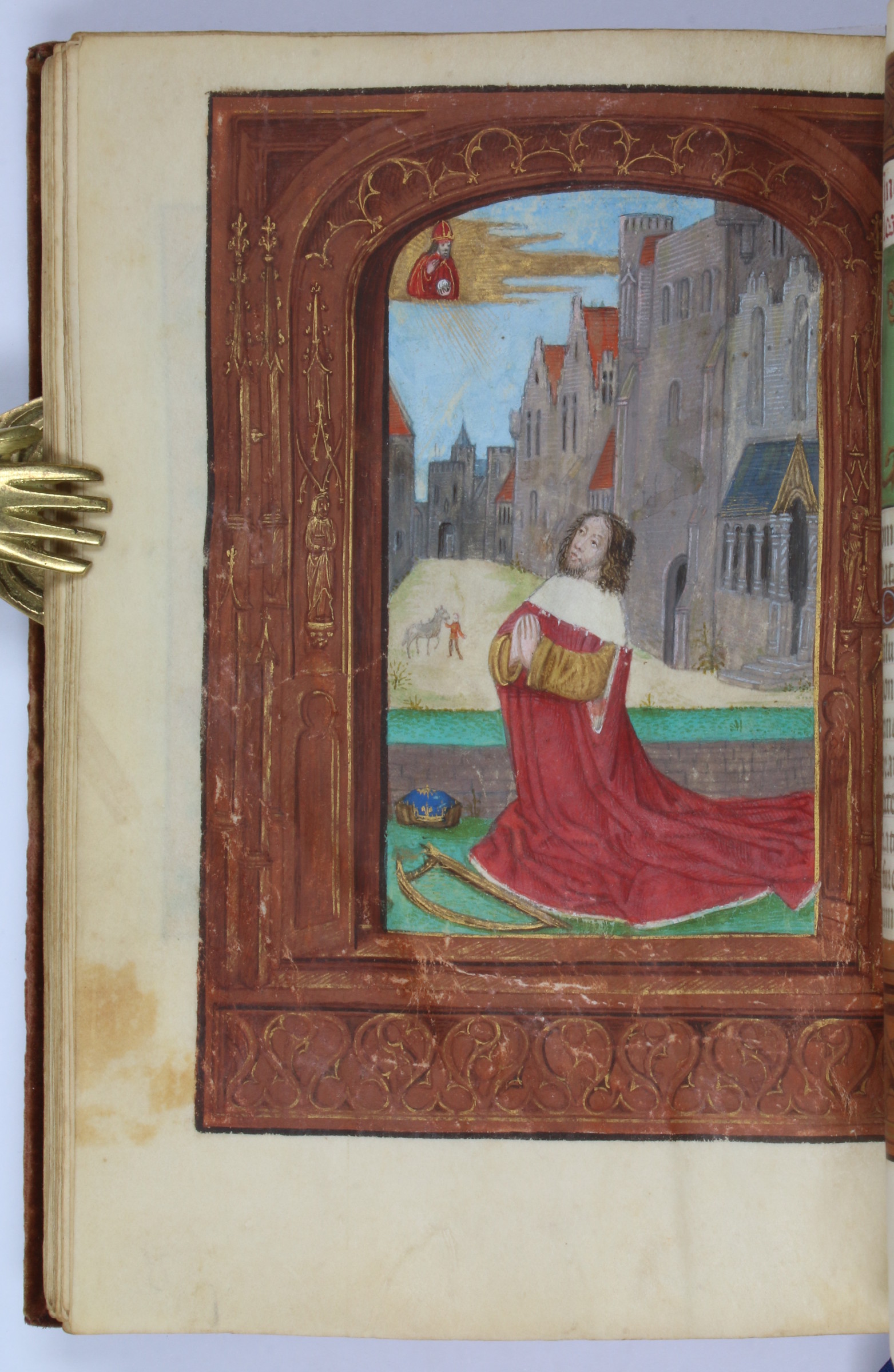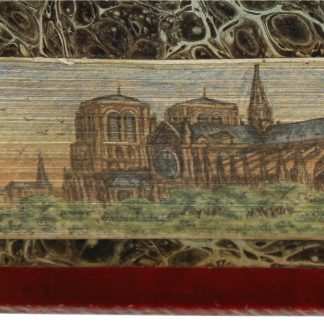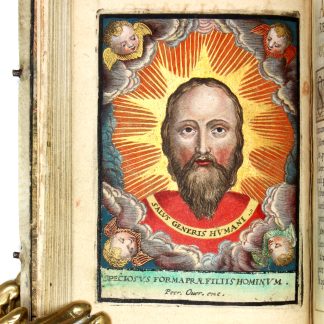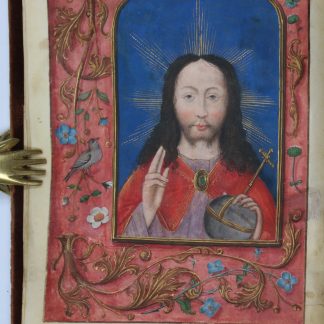An outstanding Flemish Book of Hours with 14 high-quality illuminations
Book of Hours (use of Rome).
Illuminated Latin manuscript on vellum. 113 ff. with 14 full-page miniatures within decorated full scatter borders of strewn flowers and drolleries; large acanthus initials in matching borders; 18 miniatures. Presumably lacks one miniature and 4 leaves. 20th century red velvet binding (130 x 180 mm). All edges gilt.
€ 150,000.00
An outstanding, unpublished Book of Hours, produced around the year 1500, at the apogee of Flemish book illumination. The quality of illumination is remarkable, both in the borders and the full-page miniatures. The execution is neat and flawless.
At least three different miniaturists worked on the illumination cycle of this precious Book of Hours. One main hand, however, executed almost all of the images, even the small ones, excepting only the Holy Face at the beginning and King David in Prayer towards the end of the book.
While this main painter must remain anonymous for the time being, it can be stated with confidence that he had access to patterns that were used, adjusted and creatively changed among the most famous of his contemporary fellow book illuminators. The Madonna and Child in a gloriole on fol. 17v, for example, is executed in the most refined manner. His style emulates the Masters of the Prayerbooks around 1500, in many cases not dissimilar to the illumination cycle in the so-called Suchtelen Hours, kept at the Walters Art Gallery in Baltimore (Ms W.176; cf. for example the Flight into Egypt, fol. 115v, or the Visitation, fol. 56v). The Adoration of the Magi appears to trace back to a pattern by Simon Marmion, as exemplified in Ms. M6, fol. 44v, in the Pierpont Morgan Library in New York. Manuscript W.427, dated ca. 1500 and again housed in Baltimore at the Walters Art Gallery, forms a veritable treasure trove of illuminations directly comparable to ours: not only the script is stunningly similar to that employed in the current book, but the Visitation (fol. 69v) and the Flight into Egypt (fol. 115v) share with it the figures as well as the background. The illumination in W.427 is attributed to followers of the Master of the Dresden Prayer Book and the Master of the David Scenes in the Grimani Breviary. The Annunciation to the Shepherds on fol. 44v has an almost identical equivalent (includes even the choice of colours) in the Hours of Doña Isabel on fol. 134v, illuminated by Simon Bening and his workshop between 1510 and 1520 (Marrow 2008, p. 50).
The style and colour palette of the Salvator Mundi miniature does not reappear in the other miniatures. The Master of the David Scenes in the Grimani Breviary (now in the Marciana in Venice) is known to have contributed a very similar illustration to many manuscripts, but while the present miniature closely recalls his work, it is in fact by the hand of a different, unidentified artist. This opening head-and shoulders illustration of the Salvator Mundi, with his right hand raised in benediction, is derived from the Bruges tradition, based on an original design by Jan van Eyck adapted by Willem Vrelant.
The highly appealing scatter borders of strewn flowers interspersed with strawberries, snails, little birds, and even a peacock again closely resemble examples painted in Bruges by the so-called Master of the Prayerbooks of 1500, which name in fact designates a group of artists or workshop. Apart from the scattered flowers on a golden yellow background, the artists also used branch tracery and architectural elements for the borders, elements which are all highly characteristic for Flemish Books of Hours around 1500.
The Master of the Prayerbooks of 1500 collaborated with the Maximilian Master, but also with Gerard David, Gerard Horenbout, and other leading artists of the day whose work is found together in the famous Rothschild Prayerbook. As the several artists who collaborated on any book could be based in different places, it is often not possible to attribute a manuscript to either Ghent or Bruges specifically. In the present example, at least the sparsely filled calendar points quite clearly to Ghent: January 30th has an entry for St Aldegundis, who died in Drongen Abbey near Ghent in the 7th century. October 1st celebrates St Remigius and St Bavo (the patron saint of the Diocese of Ghent), with their names liturgically emphasized in red ink. Unlike the Rothschild Prayerbook, which contains an otherwise very similar calendar (seized for the Austrian National Library in 1938, later restituted and sold through Christie's, now on display in the National Library of Australia), there is no entry for Archbishop Donatianus, who had a close relationship with Bruges, where his relics had supposedly been translated in the year 865, but who was not well known beyond that city.
Rebound in the 20th century, preserving separately a handwritten 19th century slip of paper containing the ownership "B. de Morell". Directly acquired from an Austrian private collection, where the book resided for more than a century.
130 x 180 mm. Illuminated Latin manuscript on vellum. 113 (instead of 118?) leaves. With 14 (instead of 15?) full-page miniatures within charmingly decorated full scatter borders of strewn flowers and drolleries, also around facing pages; large, 7-line acanthus initials in matching full borders and 18 small miniatures (6 lines), 10 accompanied by panel borders in the outer margin and 8 within double- or triple-sided borders. Early 20th century foliation in fine pencil (1-67, 67 bis, 68-112). Presumably lacks one full-page miniature before folio 62 as well as one leaf within full borders facing fol. 24v, its counterleaf before fol. 26, and two more text leaves before fols. 32 and 61. Bound in red velvet during the 20th century. Blue silk separator. All edges gilt.
Meticulously written and illuminated throughout on smooth, high-quality vellum, only very lightly stained and wrinkled at the beginning and end, but generally quite flawless, with generous blank borders. Five leaves have been lost as indicated. An uncommonly fine specimen.
Cf. James H. Marrow, The Book of Hours of Doña Isabel (Cologne, 2008).

